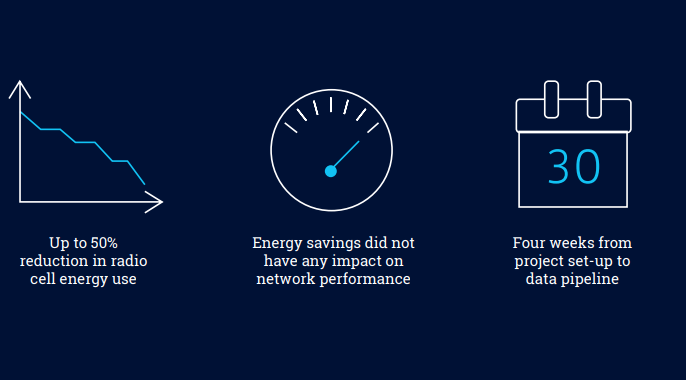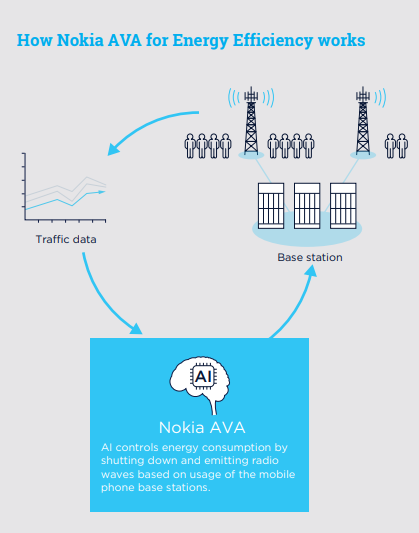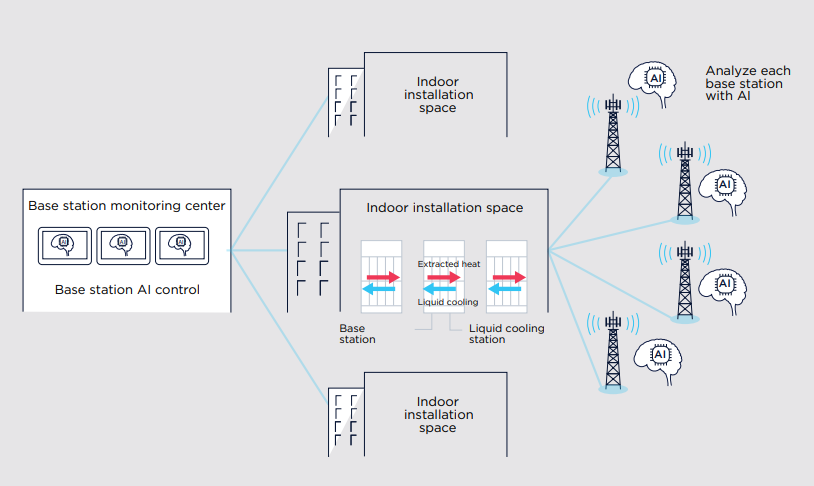Reducing base station energy consumption and carbon footprint is a top priority for communications service providers (CSPs) as they expand their networks to meet growing demand. Yet those sustainability goals can’t come at the expense of a reliable, high-quality user experience. What’s needed are new approaches to network energy management and optimisation — data-intensive processes that demand the power of artificial intelligence (AI). KDDI partnered with Nokia to trial Japan’s first AI-controlled radio access network (RAN). Using the capabilities of Nokia AVA for Energy Efficiency, the trial validated adaptation of base station energy consumption in response to changing traffic volumes, with minimum impact on subscribers.

The vision
KDDI is Japan’s second-largest communications service provider (CSP), providing mobile services to more than 60 million subscribers across the country. Like many other CSPs, KDDI wants to help create a more sustainable, decarbonised future. In its Green Plan, KDDI aims to reduce carbon emissions by 50% in 2030 compared to 2019. One way it intends to achieve that target is by reducing power consumption in its base stations.
Reducing power consumption in the base stations is an important first step since KDDI’s radio access network access network (RAN) currently accounts for approximately 60% of its total energy usage. But to effectively manage and permanently optimise network energy consumption, vast amounts of data would have to be collected and analysed from many different sources — a task far too data-intensive to be done manually.
What KDDI needed was an AI-powered network energy management system that could assess real-time demand and traffic patterns, then automatically adjust the amount of power being consumed by RAN resources to match demand. To ensure the system could do all that without compromising the premium user experience expected by subscribers, KDDI worked with Nokia to trial Japan’s first-ever AI-controlled RAN.
How Nokia helped
Shutting down unused network elements during periods of low traffic is an excellent way for CSPs to realise significant energy savings. With this pilot project, KDDI used the AI-driven Nokia AVA for Energy Efficiency to perform the precise predictions needed to balance power consumption, network performance and customer experience requirements.

Nokia AVA for Energy Efficiency uses AI to analyze and anticipate changing traffic volumes in the sites and cells of a RAN — to determine when radio resources can be powered down to reduce energy consumption. It also coordinates across multiple neighboring cells to achieve the best overall power savings within a coverage area. For example, in cases of cross coverage, one cell could be turned off completely at times of low traffic as long as the area is sufficiently served by adjacent cells.
To ensure there are no negative impacts on KDDI customers when radio resources are temporally put into sleep mode, Nokia AVA for Energy Efficiency continuously monitors network performance, powering cells back up any time an unexpected network performance degradation occurs and correcting cell states in case of faults. It also gives KDDI the ability to manually intervene at any time as needed.
This represents a shift from the current approach to network energy management, which applies manual, static schedules for powering radio resources on and off. Nokia AVA for Energy Efficiency drives predictive, closed-loop actions for faster, automated responses to changing conditions for both maximum energy savings and network quality.
A cooler way to cut power consumption
This trial of Nokia AVA for Energy Efficiency is just one way KDDI is working with Nokia to reduce energy consumption and carbon emissions. The CSP is also using the Nokia AirScale baseband solution to test Japan’s first liquid cooling system for 5G base stations.
By using liquid coolant, which has a higher cooling efficiency than conventional air-based cooling systems, KDDI aims to cut power consumption by more than 70% for the air conditioning systems that cool the rooms that house its base station facilities.

The opportunity
Because Nokia AVA for Energy Efficiency calculates when to put radio resources into sleep mode based on the required performance every day for every cell, it can implement the widest possible energy-saving windows while still delivering KDDI’s desired customer experience. During this pilot, some cells were powered down between eight and nine hours per day.
The result? On average, KDDI reduced power consumption by up to 50% in low-traffic environments and by up to 20% per cell.
In addition:
- Nokia AVA for Energy Efficiency delivered energy savings without any network performance degradations (such as traffic overflow in adjacent cells) or alarms, despite the wide sleep-state windows each day — for minimum impacts on the user experience.
- It took only four weeks to set up the project, including the data pipeline needed for the AI algorithm — for faster energy-saving results.
While this project focused on Nokia radio equipment, Nokia AVA for Energy Efficiency is fully multi-vendor, meaning it can be deployed in any of KDDI’s base stations throughout Japan — and with the strong outcomes of this trial, KDDI plans to roll out AI-driven energy management across its commercial operations network-wide. Both KDDI and Nokia will continue to work together to research and develop systems that can further reduce base station carbon footprint.
Comment on this article below or via Twitter: @VanillaPlus OR @jcvplus






